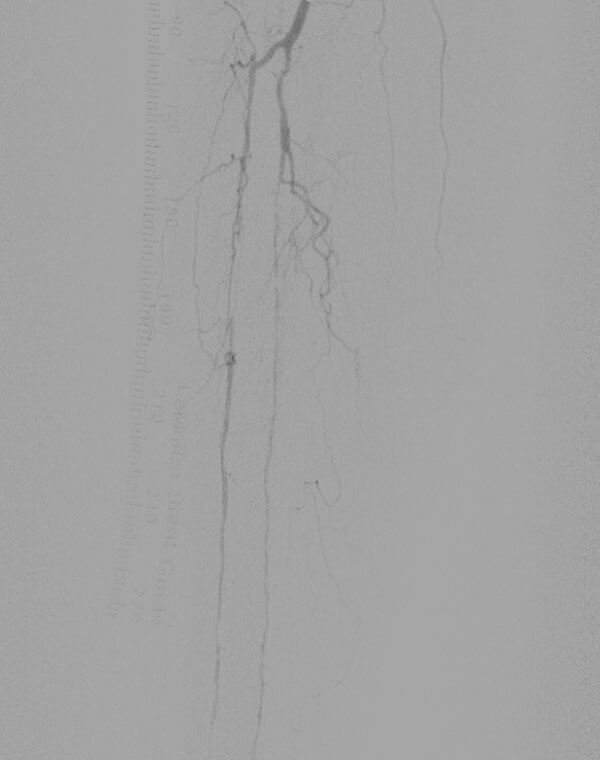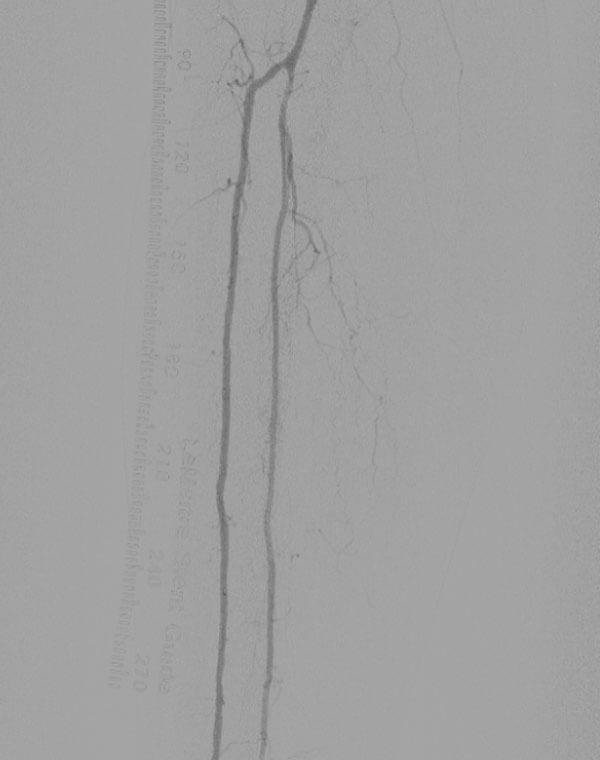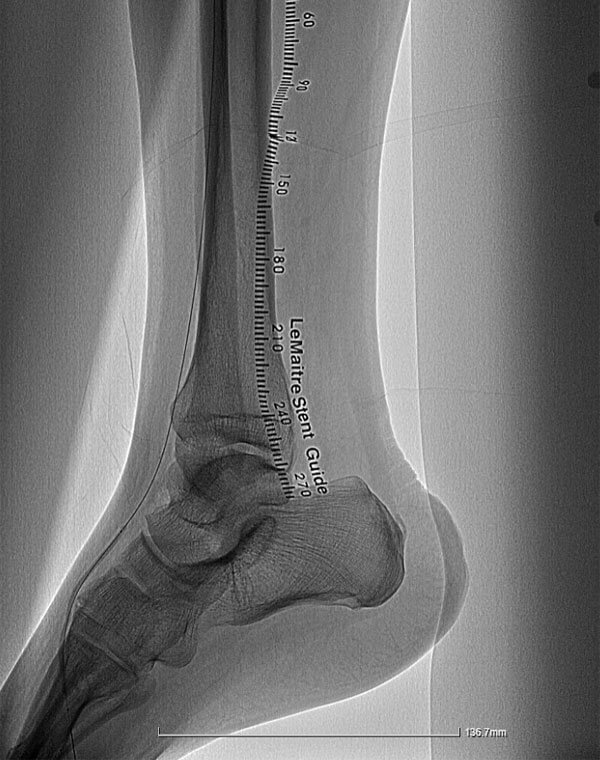Diabetes is a systemic disease which affects many organs of the human body. If the arteries are involved, blockages are developed.
The arteries are normally smooth and unobstructed on the inside. In some cases a sticky substance called plaque (atherosclerosis) builds up in the wall of the arteries. Risk factors are: age, family history, high cholesterol, diabetes, high blood pressure, obesity and smoking. Atherosclerotic plaque can be found in any artery of the body and causes the arteries to narrow and stiffen.
The first symptom of atherosclerosis of the lower extremities is pain or fatigue during walking, which stops at rest. The pain affects the buttocks, thighs or legs. As the disease becomes more advanced, the pain starts earlier during walking.
Men can experience erectile dysfunction. Ultimately, there is pain at night (when the patient is in bed), non healing leg ulcers or gangrene.
Symptoms of atherosclerosis of the upper extremities include pain with exercise, pain during the night, non healing ulcers of the fingers and gangrene.
Diagnosis of peripheral arterial disease is confirmed easily with Duplex Ultrasound. In some cases CT Angiography, MR Angiography or Contrast Angiography is needed to document the diagnosis.
Treatment of peripheral arterial disease depends on symptoms and severity of narrowing. Besides medical therapy, invasive treatment, when needed, is performed with two methods. The first one is minimally invasive (angioplasty with or without stent). The second one is open surgical procedure.
During the last few years, the vast majority of patients with peripheral arterial disease can be treated with minimally invasive procedures. During minimally invasive procedures, the repair of the artery is performed from within the vessel (this is why they are also called endovascular). Under local anesthesia, the vascular surgeon punctures the artery and uses a special balloon to open the vessel. In many cases a small metal tube (stent) is used to keep the artery open. The following day, the patient is discharged from the hospital and recovery is immediate without any pain. Open surgical procedures (bypass) requires general anesthesia and long abdominal, leg or arm incisions (depending on the location of the blockage). A detour around the blockage is created using synthetic graft or one of the patient’s own vein. Usually, we use synthetic graft for aortic or iliac disease and vein for upper or lower extremity disease.
The advantages of the minimally invasive procedure are obvious: no general anesthesia, no abdominal incision, no postoperative pain, early discharge and early recovery. The endovascular repair is performed in most but not all patients.

Below the Knee Arterial Stenosis

Successful Angioplasty
For both methods there are indications and contradictions.
The results of the endovascular repair are excellent when:
a) It is performed by experienced vascular surgeons in patients suitable for this technique.
b) It is performed in state of the art hybrid operating rooms which combine the safety of the operating room with the superb imaging capabilities of the angiography suite.
c) Last generation endovascular devices are used.
Diabetic patients should avoid smoking, control the blood glucose with medications and diet, exercise regularly and maintain a healthy weight. They must protect their feet from minor injuries, use specially designed shoes and use topical skin care according to their physician’s instructions.
Patients with diabetes and arterial disease should consult vascular surgeons with experience in both endovascular and open surgical repairs in order to receive the most appropriate method of treatment.

Foot Angioplasty
